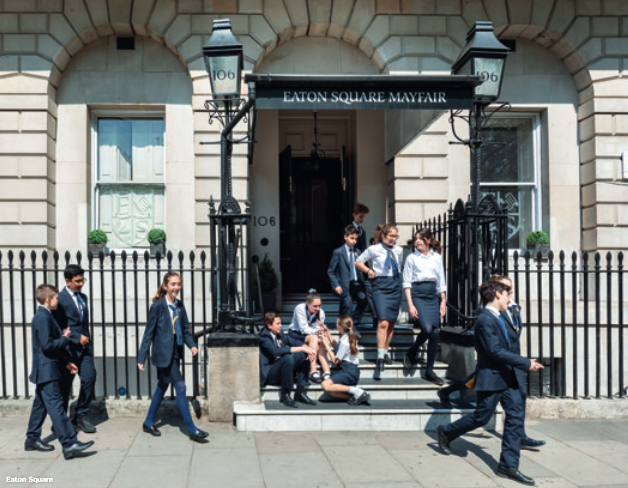Menu
Children requiring learning support often have an uphill struggle to realise their full potential, and now school funding cuts may hamper that realisation, says Gillian Upton.

The Mayor of London has referred to the crisis for parents of children with special needs as a Special Needs’ timebomb. Demand outstrips supply as London requires thousands of new school places for these children, and the situation is exacerbated by the shortfall in teaching assistants due to the funding shortfall in many mainstream state schools. It means that Special Educational Needs Coordinators (SENCOs) are coming under increasing pressure as they take on more responsibility with less resources.
According to a survey by the Association of Teachers and Lecturers (ATL), 83 per cent of teachers thought children and young people with SEND were not getting the support they needed.
Emotions are running high and in May, disabled children and their families took to the streets to demand action on what they call a national crisis in special needs funding, delivering a 13,000-signature petition to Downing Street.
The end goal for any SEN child is to secure employment yet there are further challenges here because of a lack of job opportunities, training and work experience.
All in all, it’s not an upbeat picture. It is estimated that over 200,000 children and young people in London have some level of special educational need or disability and that some 41,000 of these have high needs and either a special educational statement or an Education, Health and Care Plan (EHCP).
Obtaining an EHCP can be a protracted process; once the SEN has been identified, a referral form is completed which is then sent to a panel for approval. “The majority go through,” says a spokesperson from Merton Council.
There has been a 20 per cent increase in the number of children with high-level needs though, and the types of need are increasingly complex. If the proportion of children needing an EHCP remains the same as the last ten years, London will need to support 2,340 more young people at secondary school age – many with Autistic Spectrum Disorder – over the next five years.
Traditionally, children with mild dyslexia or dyspraxia have been well supported in mainstream schools. It may be speech and language support for example, and the level of support will very much depend on the funding available to the school if it’s in the state sector.

In the private sector, the child’s educational journey could depend on how results-driven the school is. Andy Alborough, Director of Language and Learning at Garratt Park SEN School says: “Inevitably, when you get to Year 9, schools realise that children won’t get any accreditations and then we receive casual admissions requests.”
All is not lost as a clutch of private schools accept a broader intake of children with mild difficulties, including Wetherby Pre-prep, Thomas’s, Hill House and Eaton Square.
At secondary and senior school some disabilities become amplified and coping strategies can include taking GCSE subjects not reliant on an exam, such as drama, dance and media studies, or opting for BTECs. Extra time, the use of a laptop and a scribe can help exams seem less daunting, but this support is dependent on the results of an educational psychologist’s assessment. Around 7 per cent of senior school pupils at JAGS, for example, are diagnosed as SEN children.
“Children can stay in mainstream schools if their needs are being met and they can fulfil their potential,” says a spokesperson from the borough of Merton. The current funding crisis may well be at the root of the increase of children being taught at home, particularly dyslexic children.
However, any moderate learning difficulties (MLD) – particularly significant autism or social and emotional needs – are best supported at a SEN school. Figures suggest that 1 in 58 people are diagnosed with autism, although many children can function independently.
The bulk of children who attend Garratt Park SEN secondary school have moderate learning difficulty (MLD) and are usually about four years behind, explains Andy Alborough. The equivalent school in the borough of Lambeth is Elm Court. “They are learning at a slower pace – at Year 1 or 2 – so need a higher adapted curriculum, and often have physical or social skills disorders too.”
Children learn in small groups of no more than a dozen to a class and are taught a simplified secondary curriculum. Success is measured by accreditation. “By end of Year 11 some 85 per cent will get five or more secondary school accreditations – GCSEs, BTECs, DofE or an Art Award in a non-academic subject,” says Alborough. “Our goal is to get children into college at 18 and some 98 per cent do get into college or supported employment,” he says.
Demand outstrips supply for places. “This year we had 80 applications for 24 places so we have to be strict and very clear on our admissions criteria,” he says. “The MLD curriculum is our bread and butter whereas somewhere like Centre Academy is more specialist and will take more able-bodied students than us.”
Wandsworth offers a wide range of SEN schools. Some are day schools and others offer weekly boarding or residential arrangements. If the matchmaking process fails in their own borough then parents can look elsewhere or the private sector.
Despite the competition for places in the state-funded SEN schools, only a small number look at private provision and here there is choice, including Fairley House School and Fairley House Assessment Clinic, The McLeod Centre for Learning, The Dominie, Abingdon, Bruern Abbey and Beyond Autism, which has both a primary (Park House School) and secondary school (Tram House School). CReSTeD accreditation is the gold standard.
At Park House School, all pupils have their own tutor on a 1:1 basis, with no more than eight to a class, and the education is underpinned by ABA, (Applied Behaviour Analysis), which is intensive intervention, and VB (Verbal Behaviour), both gold standards for the teaching of autism. “It’s an effective way of teaching,” says Head Kieran Bird.
The admissions process is the same, with open days to view the school and check its suitability. “We have to see if there is a peer group for the child. Developmentally they’re far behind their peers, so we have to ensure that interaction between the pupils is right as behaviour could be an issue. We’re honest about whether we can meet a child’s needs,” says Bird.
One glimmer of hope is the plan to build 37 new and free special schools across the country, Kingston being one of five London locations which together will provide over 400 additional places for children with complex needs. Until they open and the government releases more money from the Treasury, SEN funding remains a major stumbling block and parents have no choice but to fight for the right level of support so their child can flourish.